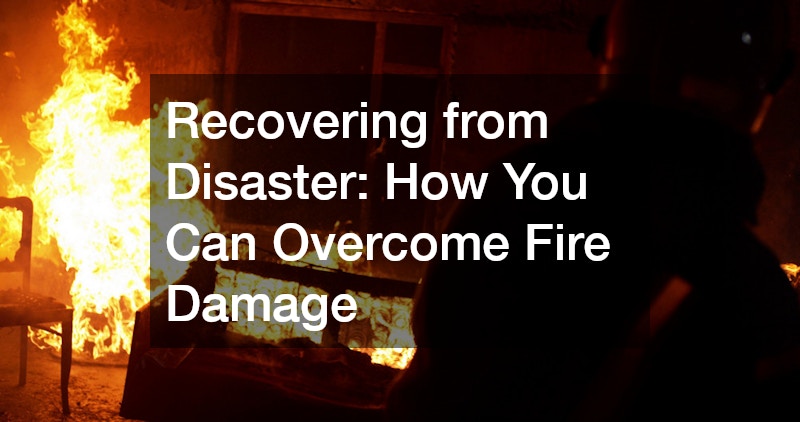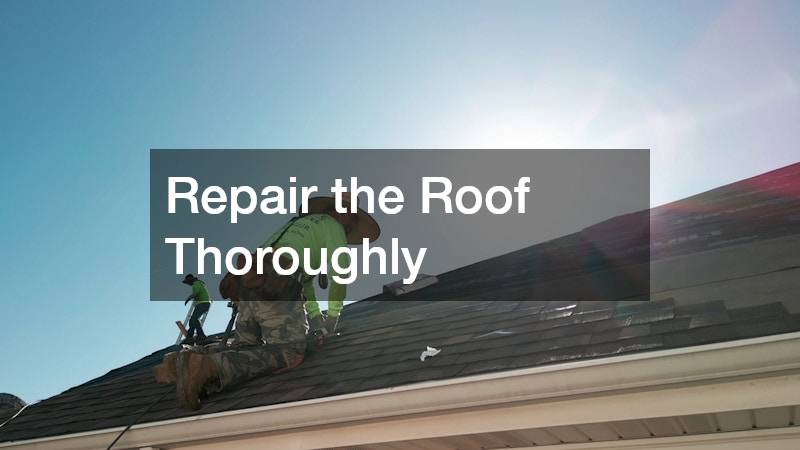
Recovering from a disaster can be overwhelming, leaving homeowners facing both emotional stress and practical challenges. The destruction caused by events such as fires can compromise multiple aspects of a home, from structural stability to water systems, creating a complex recovery process. Understanding the steps involved and approaching the situation methodically can ease the burden and help ensure that repairs are completed safely and efficiently.
The aftermath of a fire often reveals hidden damage that goes beyond what is immediately visible. Heat and smoke can weaken walls, ceilings, and support structures, while water used during firefighting can exacerbate problems by affecting electrical systems and promoting mold growth. Addressing these concerns promptly and strategically allows homeowners to coordinate resources effectively, reduce risks, and restore their property in a way that prioritizes both safety and comfort.
Assess Structural Integrity After a Disaster
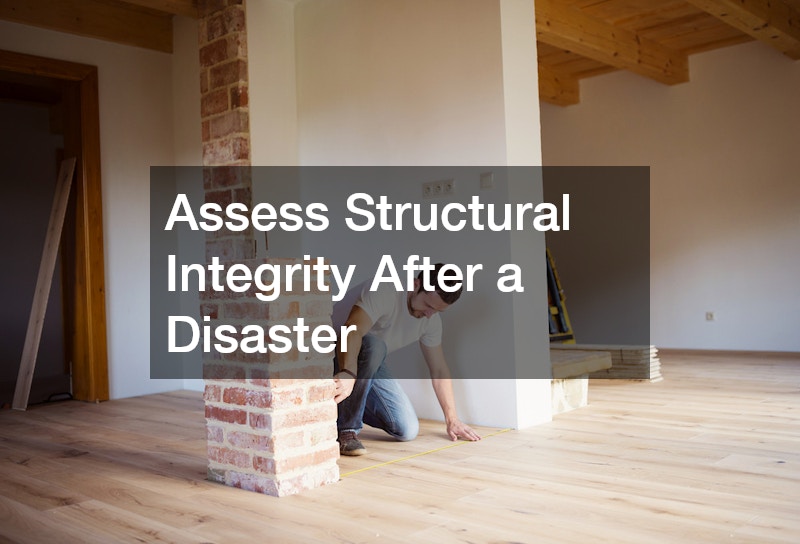
Evaluating the structural integrity of a home is a critical first step in disaster recovery. Walls, ceilings, and load-bearing components may suffer damage that isn’t immediately obvious, yet these issues can pose serious risks if not addressed. Fire damage can compromise the strength of key structural elements, making inspections essential to identify potential hazards before cleanup or restoration begins. Prioritizing this assessment ensures that subsequent repairs are both safe and effective, helping prevent additional complications.
Foundation repair experts play a vital role in this process. They use specialized tools and techniques to detect shifts, cracks, or uneven settling caused or worsened by fire damage. Their evaluations include recommendations for immediate stabilization and long-term solutions to reinforce the home’s structural integrity. Addressing foundation concerns early not only prevents future issues but also establishes a secure base for other restoration efforts, making the recovery process more streamlined and effective.
In addition to professional assessments, homeowners can take preliminary steps to observe potential hazards. Checking for sagging ceilings, unusual floor slopes, or visible cracks in walls can help identify areas that may require urgent attention. Documenting these observations with photos and notes is valuable for insurance claims and ensures that contractors can focus on the most critical repairs first. These proactive measures also allow homeowners to maintain a safe environment during cleanup.
Hire a Professional Plumbing Expert
Water systems are particularly vulnerable after a disaster, especially when fire damage is involved. Pipes may be weakened by heat or exposed to debris and ash, and firefighting efforts can inadvertently cause leaks or other issues. Hiring a plumber ensures that compromised systems are repaired correctly, maintaining safe water flow and preventing secondary damage such as mold growth or water infiltration. Timely intervention in plumbing can save significant costs and reduce ongoing repair challenges.
A licensed plumber can thoroughly inspect both visible and hidden elements of the plumbing system. From damaged pipes to water heaters affected by residual heat or debris, a professional can identify risks and provide targeted repairs. They may also recommend temporary measures to protect the system while other restoration work is underway, ensuring that water flow and pressure remain reliable. Addressing plumbing concerns early in the fire damage recovery process contributes to a safer, healthier living environment and allows other repair teams to work more efficiently.
Even minor leaks or damaged fixtures can create long-term issues if left unattended. Monitoring water pressure, unusual sounds, or discoloration around faucets and pipes can provide early warnings of underlying problems. Acting quickly to prevent additional moisture accumulation helps protect interior surfaces and reduces the risk of secondary damage such as mildew or rot. Homeowners who pay attention to these details often save time and money during the restoration process.
Inspect and Service the Roof
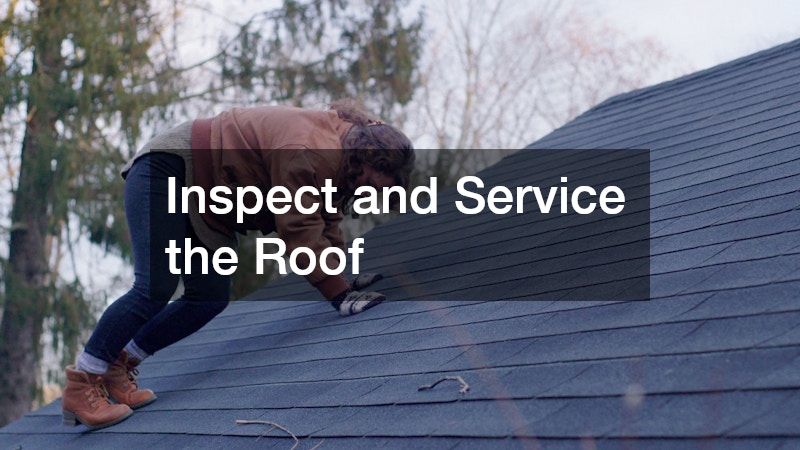
The roof is a critical protective barrier, and fire damage can weaken shingles, flashing, or structural supports. Even seemingly minor damage can lead to leaks, water intrusion, and additional deterioration if not addressed promptly. Roof inspections after a disaster help identify areas of concern, establish repair priorities, and protect the home from further exposure to the elements. Maintaining roof integrity early on is essential for ensuring the safety and longevity of all restoration efforts.
Working with a roofing service ensures thorough assessment and repair. Professionals can replace damaged shingles, reinforce weakened areas, and offer preventative recommendations to prevent future issues. They may also coordinate repairs with other contractors, such as foundation or plumbing specialists, to create an integrated recovery plan. A well-maintained roof protects the home during the vulnerable stages of fire damage restoration and reduces the risk of additional structural problems.
While professionals handle repairs, homeowners can maintain temporary protections to prevent further damage. For example, covering exposed areas with waterproof tarps can reduce the risk of water intrusion during rain. Regularly inspecting the roof during the recovery period helps identify emerging problems before they escalate. Even small preventative measures can significantly reduce the likelihood of additional damage, preserving the results of professional repairs.
Remove Damaged Trees Safely
Fallen or compromised trees pose safety hazards during the recovery process. They can block access, endanger property, and even contribute to further damage if left unchecked. Promptly evaluating and removing unsafe trees ensures a secure environment for restoration work and prevents accidents or secondary damage.
A professional tree service can identify unstable trees and safely remove them. Experts have the equipment and knowledge to handle large, partially burned trees, preventing additional harm to the home or surrounding landscape. They can also advise on protecting remaining healthy trees, maintaining the property’s aesthetic and ecological value. By addressing tree hazards early, homeowners create a safer workspace for contractors and streamline the overall recovery process.
Clearing damaged vegetation also improves accessibility for repair crews and equipment. Removing debris from pathways, driveways, and yards ensures that restoration work proceeds efficiently. Landscaping cleanup also helps prevent pests and rodents from inhabiting the damaged areas, which can create additional challenges if left unaddressed. Proactive vegetation management contributes to both safety and the overall effectiveness of the recovery process.
Repair the Roof Thoroughly
The roof is one of the most critical components of a home, and fire damage can weaken shingles, flashing, or supporting structures, creating the potential for leaks and additional deterioration. Promptly addressing roof issues ensures that the rest of the home remains protected from the elements and prevents further damage from water or wind exposure. Evaluating the roof thoroughly allows homeowners to prioritize repairs and plan for a durable, long-lasting restoration.
A roofing company can provide professional inspections and repairs to restore structural integrity and protect against future issues. They assess damaged areas, replace weakened components, and reinforce the roof where necessary to prevent additional damage from causing further complications. Early intervention ensures that other restoration efforts, such as plumbing or interior repairs, are not undermined by roof-related problems, creating a safer and more stable environment for the home.
In addition to professional repairs, homeowners can take temporary protective measures to shield the roof while restoration is underway. Covering exposed areas with waterproof tarps or securing loose materials helps prevent rain or debris from causing further damage. Regular visual inspections during this period allow homeowners to detect emerging issues early, complementing the work of professionals and ensuring the roof remains secure throughout the recovery process.
Engage a Specialized Restoration Company
Fire damage often requires expertise beyond typical home repairs. Specialized restoration companies coordinate multiple recovery efforts, from structural repairs to smoke and soot remediation, ensuring each aspect of the property is restored effectively. Engaging professionals early helps prevent mistakes and provides a clear plan for navigating the complex aftermath of a disaster.
A fire damage company brings specialized tools and experience to restore a home safely. They can remove hazardous materials, clean soot and smoke residues, and coordinate with other contractors to create a cohesive recovery plan. By leveraging this expertise, homeowners achieve a comprehensive restoration, addressing both immediate safety concerns and long-term structural needs. This approach not only accelerates recovery but also ensures lasting results.
In addition to hands-on restoration, these companies often provide guidance for coordinating insurance claims. They can document damage, prepare detailed reports, and help homeowners understand what repairs are necessary and which are optional. This support simplifies communication with insurers and ensures that the recovery process is aligned with coverage limits. Homeowners benefit from having both practical and administrative support during an often stressful time.
Maintain and Repair Gutters
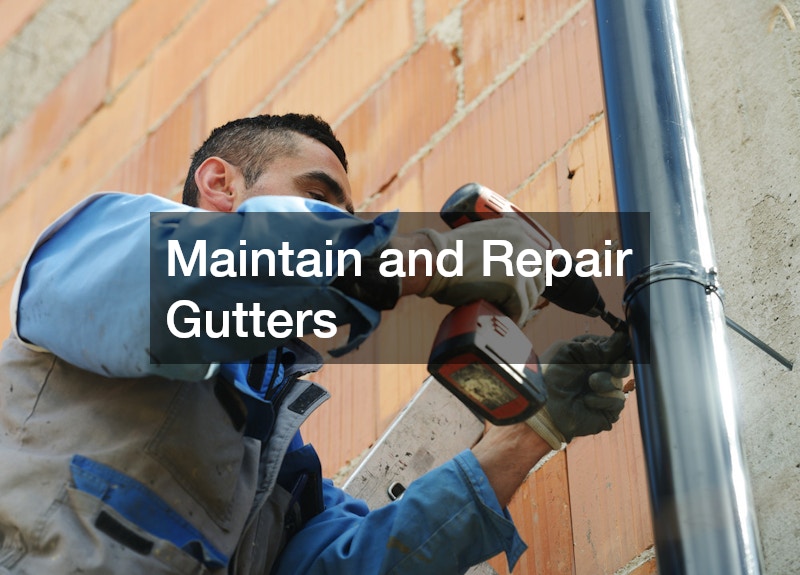
Gutters play a critical role in protecting a home from water-related damage after a fire. Damaged or blocked gutters can exacerbate fire damage by allowing water to pool near the foundation or seep into compromised areas. Maintaining and repairing gutters early in the recovery process prevents further deterioration and contributes to overall home stability.
Gutter repairs involve clearing debris, fixing leaks, and replacing damaged sections. Professionals can also evaluate whether the gutter system is capable of handling runoff efficiently, particularly after firefighting efforts have left the property exposed. Properly functioning gutters protect structural components, prevent erosion, and support the overall recovery process by reducing the risk of additional damage to the home.
Cleaning the surrounding areas near the gutters is just as important as fixing the system itself. Leaves, debris, and ash can accumulate along the roofline, potentially obstructing water flow and causing additional maintenance issues. Regular upkeep during the recovery process ensures that gutters function efficiently and prevents minor problems from becoming major complications. Keeping this area clean also reduces safety hazards for both residents and workers.
Clear Blocked Drains Efficiently
Blocked or compromised drains are common after a fire and can lead to water backup, structural issues, or mold growth. Ensuring that all drainage systems function properly is essential for a safe and organized recovery process. Timely drain maintenance also protects other repairs from being undermined by water-related problems.
Local drain cleaning professionals can quickly identify and remove blockages, using specialized tools to clear debris without causing further harm. They can also inspect the broader plumbing system for vulnerabilities introduced by fire or firefighting water. By addressing drainage issues early, homeowners protect their property from secondary damage and create a safer environment for ongoing restoration efforts.
Restore Heating and Cooling Systems
Fire damage can impact HVAC systems, affecting both functionality and indoor air quality. Smoke, soot, and heat exposure may compromise ductwork, vents, and mechanical components, making it crucial to restore these systems promptly. Proper evaluation and repair ensure the home remains comfortable, safe, and energy-efficient throughout the recovery process.
An HVAC repair professional can inspect, clean, and repair all affected components, restoring airflow, temperature control, and system efficiency. They may also provide guidance on preventing future issues and improving indoor air quality after a fire. By addressing heating and cooling systems early, homeowners maintain comfort and safety while other restoration efforts proceed, reducing the risk of long-term complications.
Manage Debris with Rental Solutions
Disaster recovery produces significant debris, including burned materials, tree limbs, and damaged household items. Efficient removal of this debris is essential to maintain safety, organize repair efforts, and prepare the property for reconstruction. Proper debris management also minimizes the risk of secondary damage or injury during cleanup.
Dumpster rentals provide a practical solution for debris removal, offering appropriately sized containers to safely contain and dispose of waste. Professionals can advise on placement, scheduling, and segregation of materials for disposal or recycling. Efficient debris management ensures a cleaner, safer environment for contractors and homeowners, supporting a more streamlined and effective fire damage recovery process.
Recovering from a fire requires a coordinated approach that addresses immediate safety concerns and long-term structural repairs. From evaluating the foundation and roof to restoring plumbing, HVAC systems, and gutters, each step is essential to restoring a home’s safety, functionality, and value. Clearing debris, removing hazards, and engaging specialized professionals further ensures that the recovery process proceeds efficiently and effectively.
By following a structured plan and relying on experienced experts, homeowners can minimize stress, prevent costly mistakes, and restore their property to a safe, livable condition. Each element of the restoration process contributes to a stable and secure home environment, providing both short-term safety and long-term resilience. With careful planning and professional guidance, it is possible to overcome disaster, returning the home to a comfortable, functional, and well-protected state.
